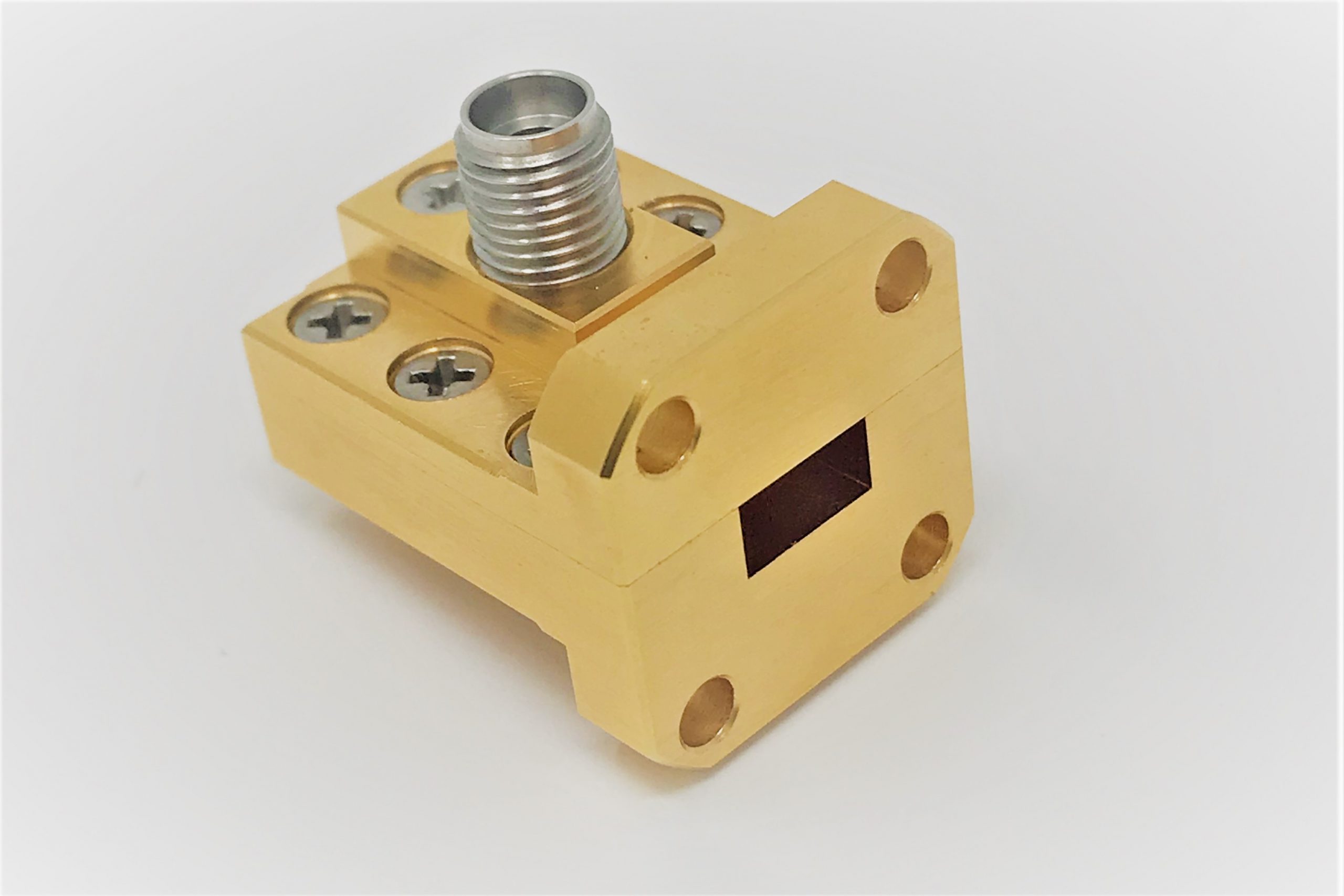Waveguide to coax adapters are used to convert waveguide signals to coaxial cable signals, commonly used in the 0.5 GHz to 40 GHz frequency range, ensuring low insertion loss (approximately 0.2 dB), suitable for radar and communication systems.
Main Parameters and Significance of Adapters
The main parameters of waveguide to coax adapters include frequency range, insertion loss, return loss, power handling capacity, and impedance matching. Frequency range is one of the key parameters of the adapter, usually between 0.5 GHz and 40 GHz, different frequencies are suitable for different application scenarios.
Insertion loss is another key parameter, referring to the power loss of the signal through the adapter, usually expressed in decibels (dB). Lower insertion loss means less signal attenuation and better transmission performance. High-quality adapters on the market generally have an insertion loss of between 0.1 dB and 0.5 dB. A well-known company launched a high-end adapter with an insertion loss of only 0.2 dB, greatly enhancing the stability of signal transmission.
Return loss indicates the degree of signal reflection at the adapter interface, the higher the return loss, the better the performance of the adapter. Return loss should be above 20 dB to ensure good signal matching. A famous brand adapter has a return loss of 30 dB, widely used in high-precision radar systems.
Power handling capacity refers to the maximum power that the adapter can withstand, usually in watts (W). For high-power application scenarios such as military communication and satellite communication, the power handling capacity of the adapter is particularly important. High-power adapters have a power handling capacity of over 10 W, and a company’s latest adapter has a power handling capacity of 50 W, suitable for high-power radar systems.
Impedance matching is an important parameter to ensure no reflection during signal transmission, the common impedance values are 50 ohms or 75 ohms. When choosing an adapter, it is necessary to ensure that its impedance matches the system, otherwise it will cause signal reflection and transmission loss.
In general, understanding these key parameters helps in choosing the right waveguide to coax adapter, improving the efficiency and stability of signal transmission.

Adapter Selection for Different Frequency Ranges
When selecting an adapter, the frequency range is a crucial parameter. Adapters with a frequency range of 0.5 GHz to 3 GHz are commonly used in wireless communications and broadcast television.
In the frequency range of 5 GHz to 18 GHz, adapters are mainly used in microwave communication and radar systems. The selection of high-frequency adapters needs to consider two key parameters: insertion loss and return loss, to ensure the best signal transmission effect. An adapter used in a military radar system covers a frequency range of 10 GHz to 15 GHz, with an insertion loss of only 0.2 dB, greatly improving signal transmission efficiency.
High-frequency adapters suitable for 18 GHz to 40 GHz are mostly used in satellite communication and high-precision measurement equipment. The cost of high-frequency adapters is relatively high, but their performance is also superior. A well-known satellite communication company uses an adapter with a frequency range of 30 GHz to 35 GHz, priced at about $500 each, but its high performance makes it very popular in the market.
For applications requiring a wide bandwidth, such as adapters with a frequency range covering 0.5 GHz to 40 GHz, their design and manufacturing processes are extremely demanding, and the price is also relatively expensive. A wide bandwidth adapter used in a high-end test device has a frequency range of 1 GHz to 40 GHz, with a cost of nearly $1000 each, but its excellent performance and reliability make it an industry standard.
In conclusion, when selecting an adapter, it is necessary to make a reasonable choice based on specific application scenarios and frequency ranges, ensuring that the frequency range and performance parameters of the adapter meet actual needs, thereby achieving the best signal transmission effect.
Quality and Brand Considerations
When selecting waveguide to coax adapters, quality and brand are key considerations. High-quality adapters use precision machining and high-standard materials in the manufacturing process to ensure their long life and low loss.
When choosing a brand, well-known brands in the market such as Pasternack, Maury Microwave, and Anritsu are known for their high-quality products and reliable performance. These brands’ adapters are highly reputable in the industry, widely used in aerospace and military communications, and other demanding fields.
In terms of price, high-quality brand adapters are relatively expensive, but their performance and reliability are also more guaranteed. Maury Microwave’s high-end adapter is priced at $800 each, but its low insertion loss and high power handling capacity make it very popular in the market.
When choosing a brand, it is necessary to consider the certification and test reports of the adapter. Well-known brands usually provide detailed product certification and test reports to ensure that the adapter meets industry standards and technical specifications. These reports include detailed data on key parameters such as insertion loss, return loss, and power handling capacity, helping users make informed choices.
Industry experts often say: “Quality determines value, brand builds trust.” Choosing a well-known brand not only ensures the high performance and long life of the adapter but also provides excellent after-sales service and technical support, ensuring that users can solve problems promptly during use.






